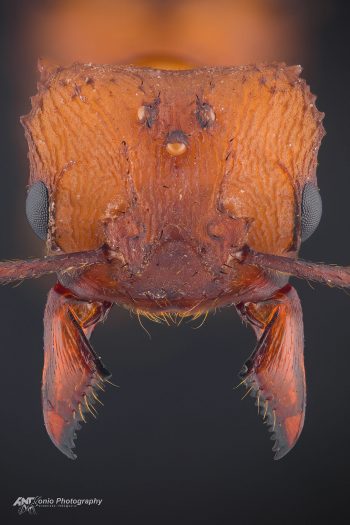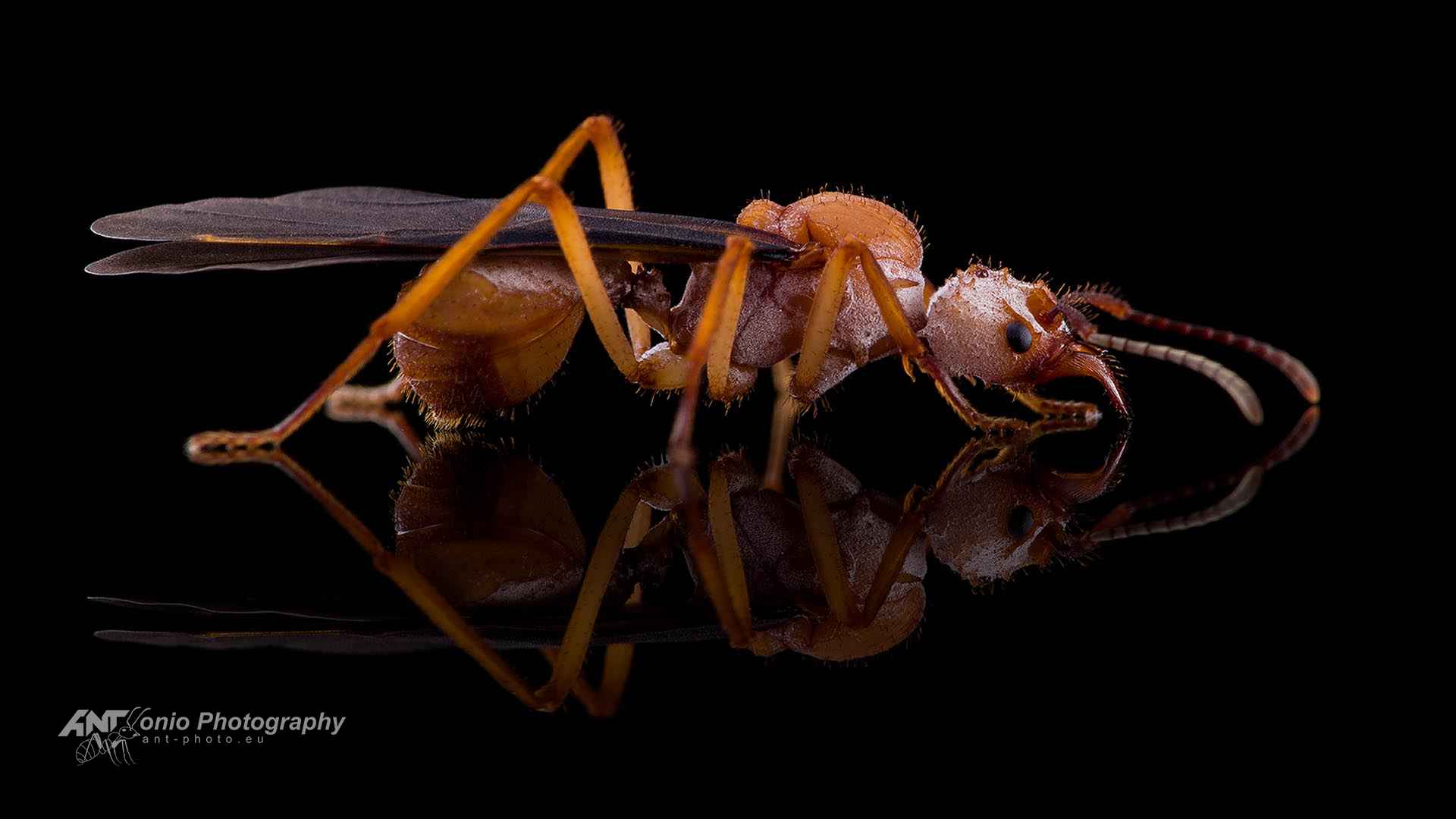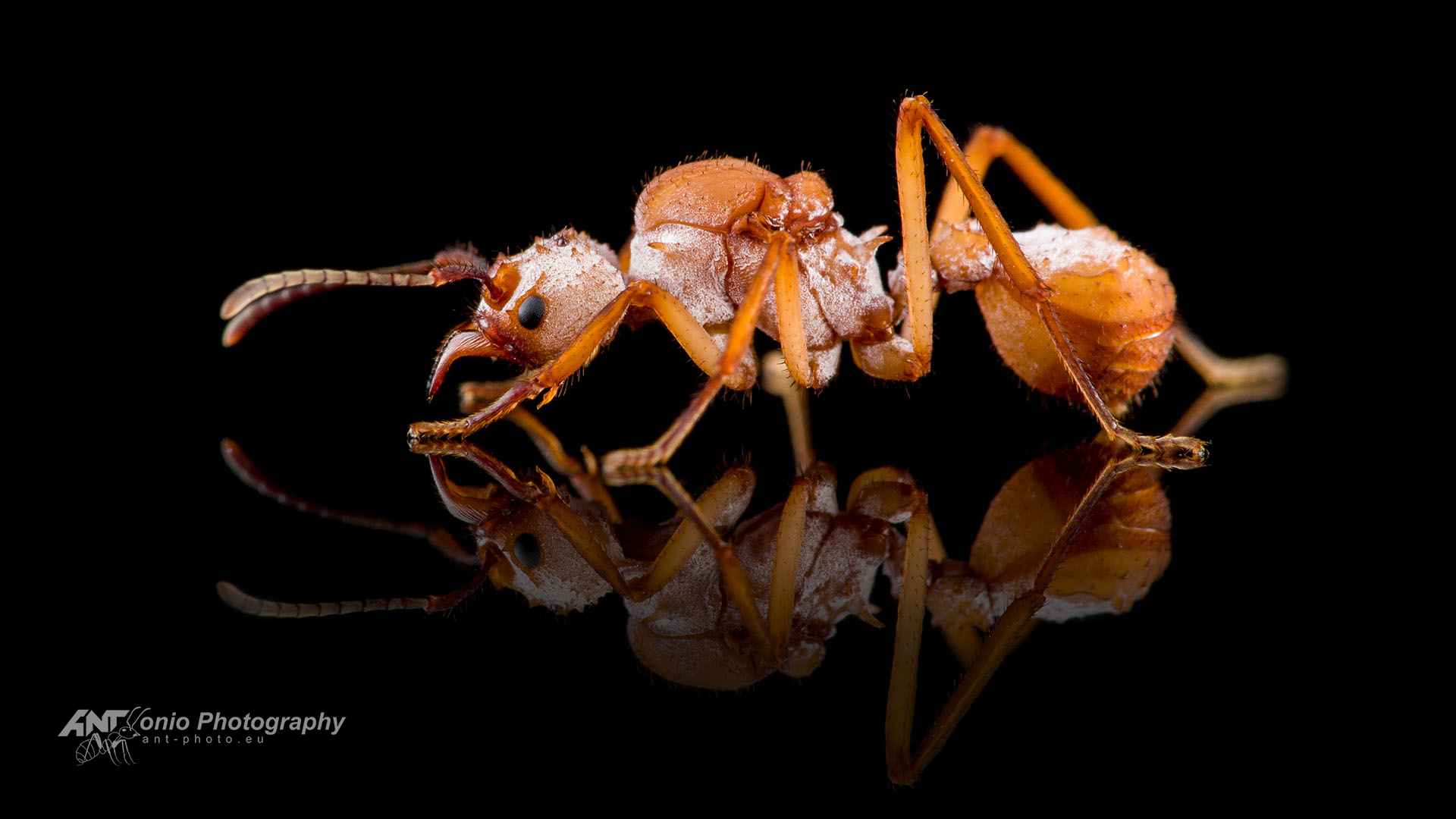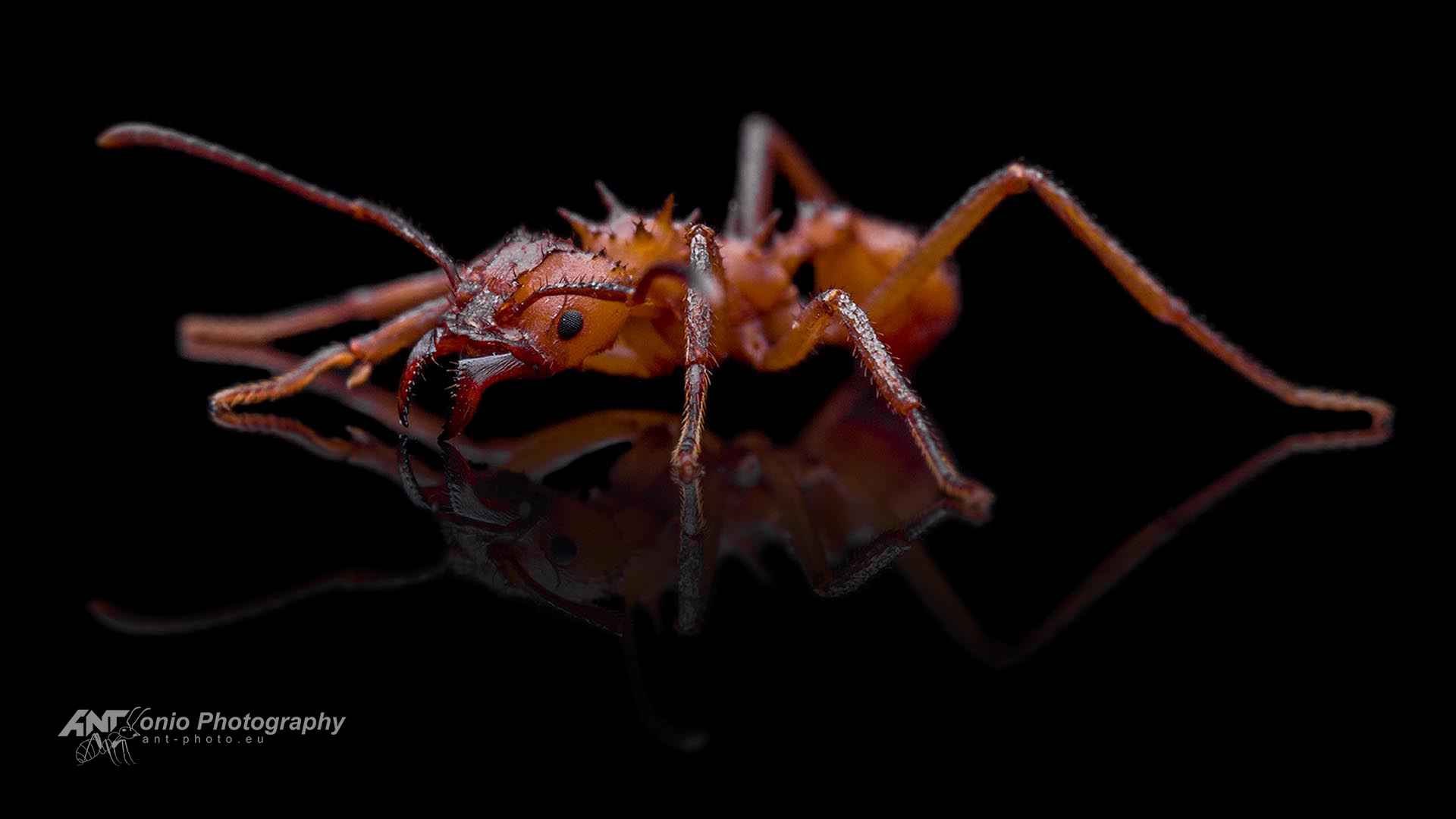Acromyrmex sp.
Leaf Cutter Ant
| Rodzina | Family: | Formicidae |
| Podrodzina | Subfamily: | Myrmicinae |
| Plemię | Tribe: | Attini |
| Rodzaj | Genus: | Acromyrmex |
| Gatunek | Species: | – |
Acromyrmex sp. photo gallery
Opis / Description of Acromyrmex sp.
![]() Mrówki z rodzaju Acromyrmex to fascynujące owady, które w świecie myrmekologii zajmują szczególne miejsce. Należą do podrodziny Myrmicinae i są znane ze swoich zaawansowanych umiejętności rolniczych. Charakterystyczną cechą dla tego rodzaju jest ich zdolność do uprawy grzybów, które stanowią główną część ich diety.
Mrówki z rodzaju Acromyrmex to fascynujące owady, które w świecie myrmekologii zajmują szczególne miejsce. Należą do podrodziny Myrmicinae i są znane ze swoich zaawansowanych umiejętności rolniczych. Charakterystyczną cechą dla tego rodzaju jest ich zdolność do uprawy grzybów, które stanowią główną część ich diety.
Aby uprawiać grzyby (Leucocoprinus gongylophorus) mrówki te przynoszą do swojej kolonii fragmenty roślin. Ze względu na sposób pozyskiwania fragmentów roślin mrówki te nazywane są leaf-cutter ponieważ swoimi mocnymi i długimi żuwaczkami tną liście na mniejsze fragmenty, które następnie transportują do kolonii. Pozyskując w ten sposób pokarm są często uznawane za szkodniki na plantacjach jednak o mniejszym znaczeniu gospodarczym niż rodzaj Atta.
Acromyrmex sp. to rodzaj, który można spotkać w różnych częściach Ameryki Południowej, w tym w Brazylii, Argentynie i Kolumbii. Jeden gatunek (A. versicolor) występuje na terenach pustynnych Ameryki Północnej. Ich kolonie są zorganizowane, a poszczególne mrówki pełnią różne role, aby zapewnić sprawną funkcję gniazda. Do tej pory opisano naukowo 56 gatunkó z rodzaju Acromyrmex.
Wśród opisanych gatunków z tego rodzaju występują dwa gatunki (A. insinuator) które są pasożytami społecznymi innych Acromyrmex. Są to A. insinuator (pasożyt A. echinatior oraz A. octospinosus, przy czym jest w stanie wydać własne potomstwo tylko w koloniach A. echinator) oraz A. ameliae ( pasożyt A. subterraneus oraz A. brunneus)
W tej galerii zdjęć prezentuję fascynujący świat Acromyrmex sp. oraz ich wyjątkowe cechy fizyczne.
![]() Ants from the Acromyrmex genus are fascinating insects that hold a special place in the world of myrmecology. Belonging to the subfamily Myrmicinae, they are known for their advanced agricultural skills. A characteristic feature of this genus is their ability to cultivate fungi, which constitute the main part of their diet.
Ants from the Acromyrmex genus are fascinating insects that hold a special place in the world of myrmecology. Belonging to the subfamily Myrmicinae, they are known for their advanced agricultural skills. A characteristic feature of this genus is their ability to cultivate fungi, which constitute the main part of their diet.
To cultivate fungi (Leucocoprinus gongylophorus), these ants bring plant fragments to their colony. Due to the way they acquire plant fragments, these ants are called leaf-cutter. Using their strong and long mandibles, they cut leaves into smaller pieces, which they then transport to the colony. While considered pests on plantations, they have less economic significance than the Atta genus.
Acromyrmex sp. is a genus found in various parts of South America, including Brazil, Argentina, and Colombia. One species (Acromyrmex versicolor) inhabits the desert areas of North America. Their colonies are organized, with individual ants performing various roles to ensure the efficient functioning of the nest. So far, 56 species of the Acromyrmex genus have been scientifically described.
Among the described species of this genus, there are two species (A. insinuator) that act as social parasites on other Acromyrmex species. These are A. insinuator (parasite of A. echinatior and A. octospinosus, capable of producing its own offspring only in A. echinator colonies) and A. ameliae (parasite of A. subterraneus and A. brunneus).
In this photo gallery, I present the fascinating world of Acromyrmex sp. along with their unique physical features.








